Warm, leafy humidity mingling with the tidy scent of oiled lumber has an almost magnetic pull for gardeners and makers alike. A greenhouse-and-shed combo harnesses that allure, giving you one footprint that cultivates seedlings, stores tools, and even soaks up passive solar heat. Done well, the structure becomes a season-stretching powerhouse that frees backyard space and streamlines every chore, from potting to pruning. Whether you dream of off-grid self-reliance or simply want a climate-proof nook for citrus and paint cans, the following ideas highlight practical, stylish ways to weave glass and timber into one hardworking hub. Feel the possibilities bloom as you explore each concept below. Practical Self Reliance Horizon Structures
1. Lean-To Greenhouse Shed Maximizes Sun
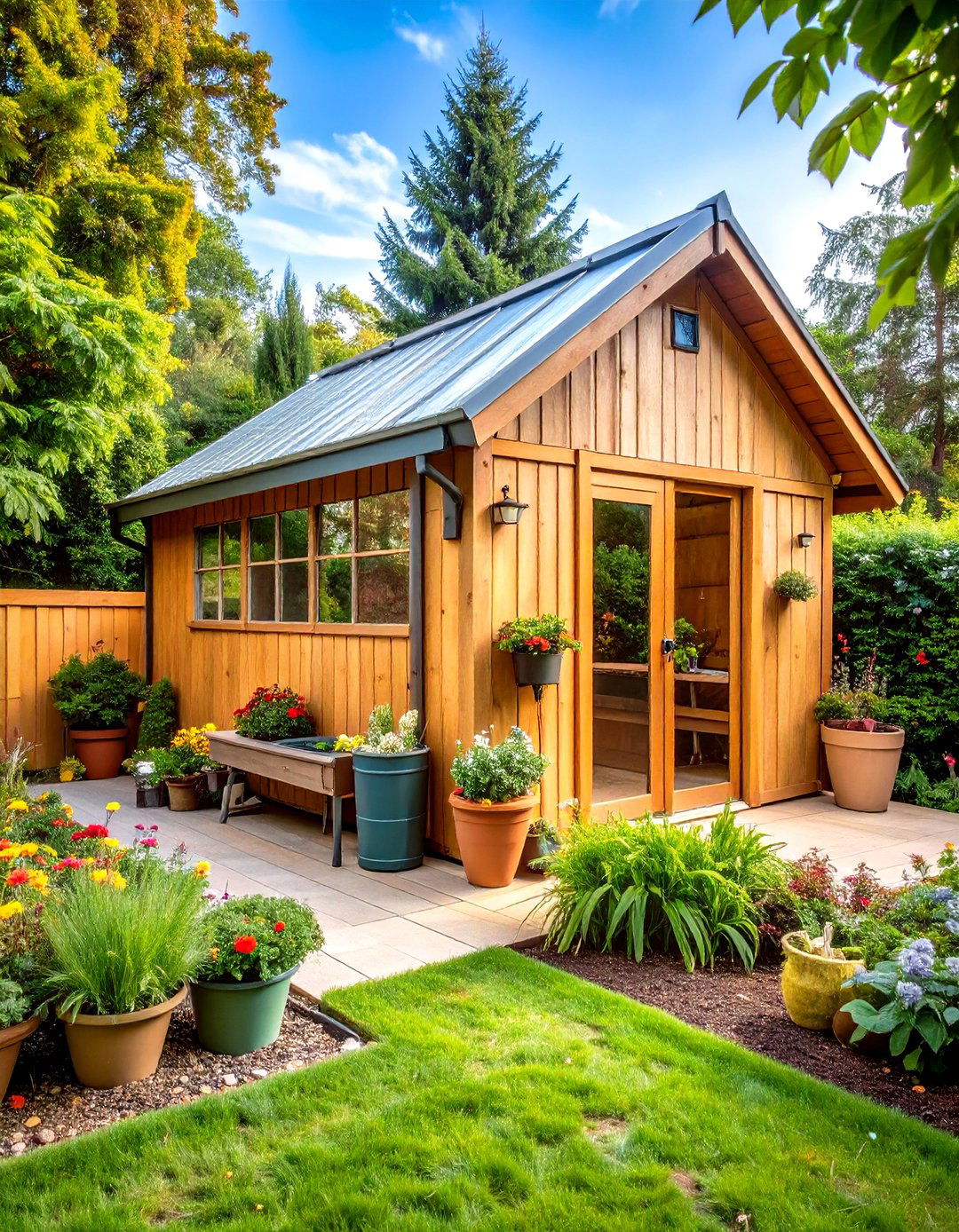
A south-facing lean-to greenhouse attached to a sturdy shed captures low winter rays while sheltering seedlings from harsh winds. By sharing one insulated north wall, you halve glazing costs and slash overnight heat loss, making the combo remarkably energy efficient. Position potting benches along the glazed slope, then tuck racks of fertilizers and watering gear against the solid back. Vent high on the roof’s peak to release midsummer heat and add gutters to channel runoff into a slim rain-barrel bank beside the shed door. Gardeners in tight suburban yards love that this design leaves the main lawn open while still supplying a generous 8- to 12-foot growing depth. Healthy Fresh Homegrown Backwoods Home Magazine
2. Potting Shed Greenhouse With Skylight Roof
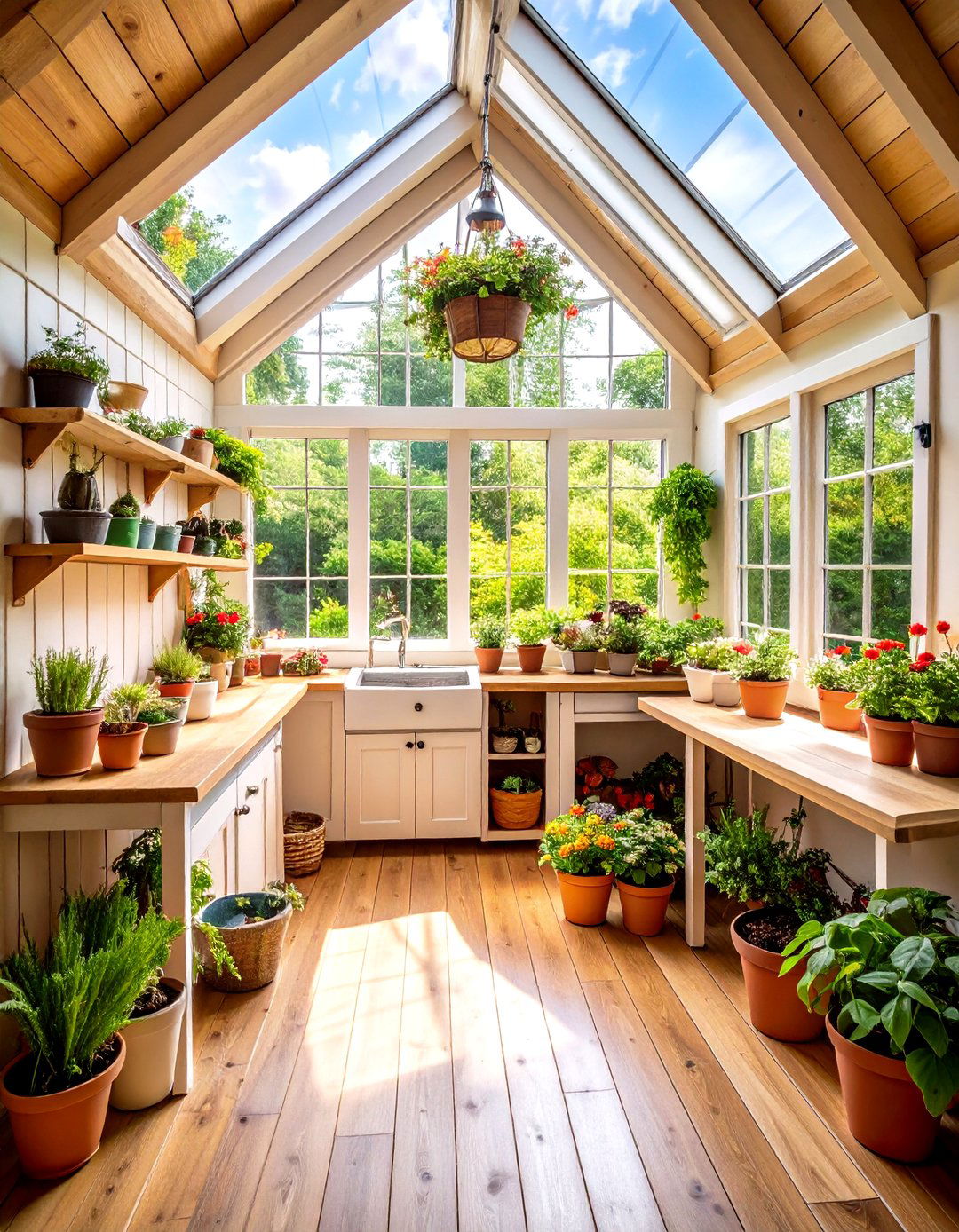
The classic potting shed gets a luminous twist when its shingled roof transitions into tempered-glass skylights above a waist-high planting bench. Sliding windows along the sidewalls let you dial in airflow, while built-in cubbies keep pruners, dibblers, and seed packets organized beneath. Add a salvaged farmhouse sink and a reclaimed-wood counter for messy mixes, then use translucent polycarbonate eyebrow panels to spill extra daylight deeper into the shed. The result is a haven where you can transplant tomatoes without crouching and still store bulky soils in dry comfort—an inspiring blend of form and function that turns even short winter afternoons into productive therapy sessions. Better Homes & Gardens
3. Passive Solar Greenhouse Shed Keeps Tools Warm
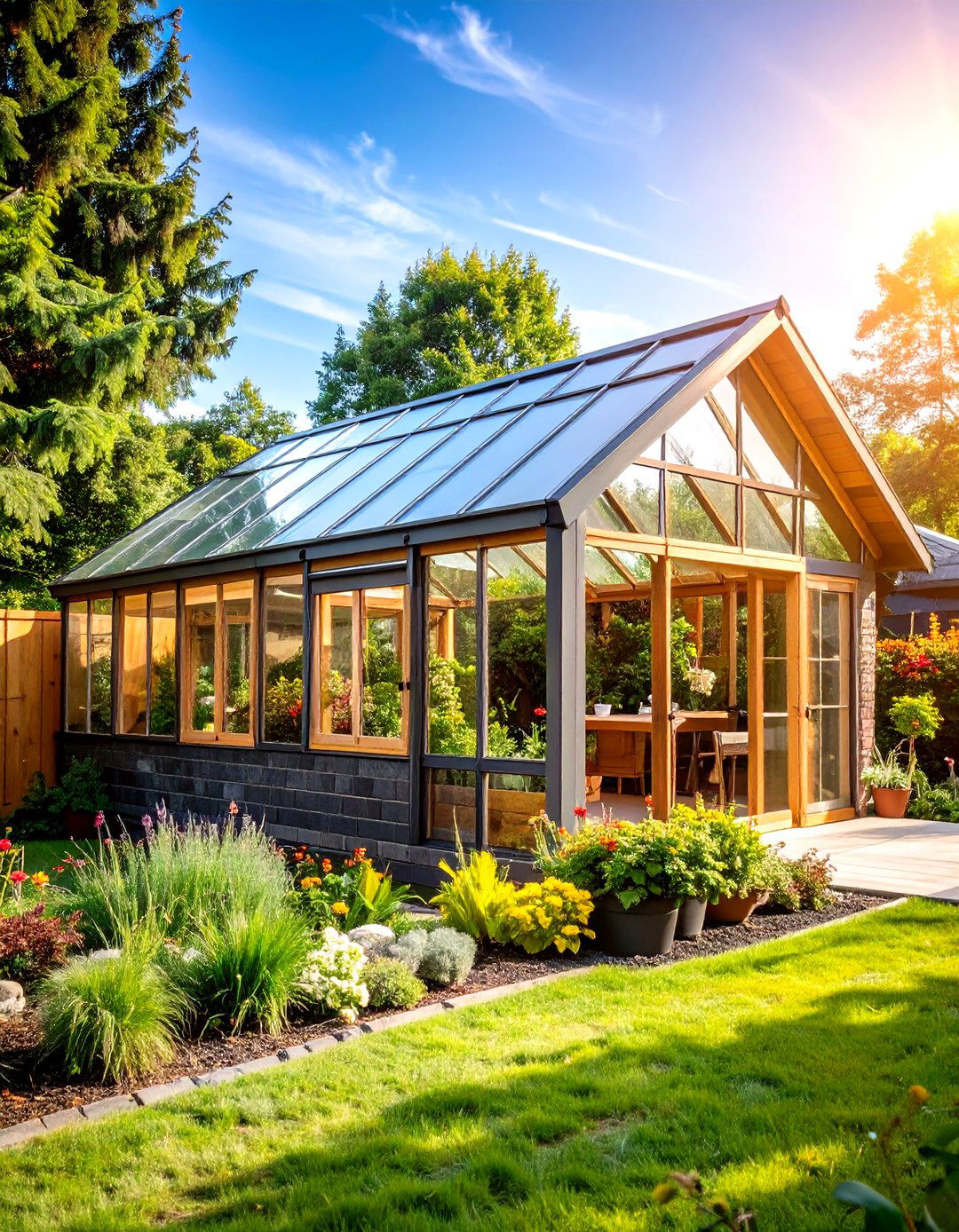
A passive-solar greenhouse wraps around a thermally massed block-wall shed, letting dark masonry absorb sunshine by day and radiate it back after dusk. Paint interior bricks matte black, line the glazed south face with water-barrel heat sinks, and install an Earth-tube intake to draw in tempered air from underground. This synergy eliminates fossil-fuel heaters in many climates while ensuring rakes and lithium-ion batteries stored inside never freeze or rust. Cedar-framed vent windows atop the clerestory purge excess humidity, and narrow overhangs shade the roof line during high-summer angles. The design rewards meticulous siting but pays you back with hardy kale in January and dry socket sets year-round. Rural Sprout Medium
4. Cottage-Style Timber Frame Greenhouse Shed
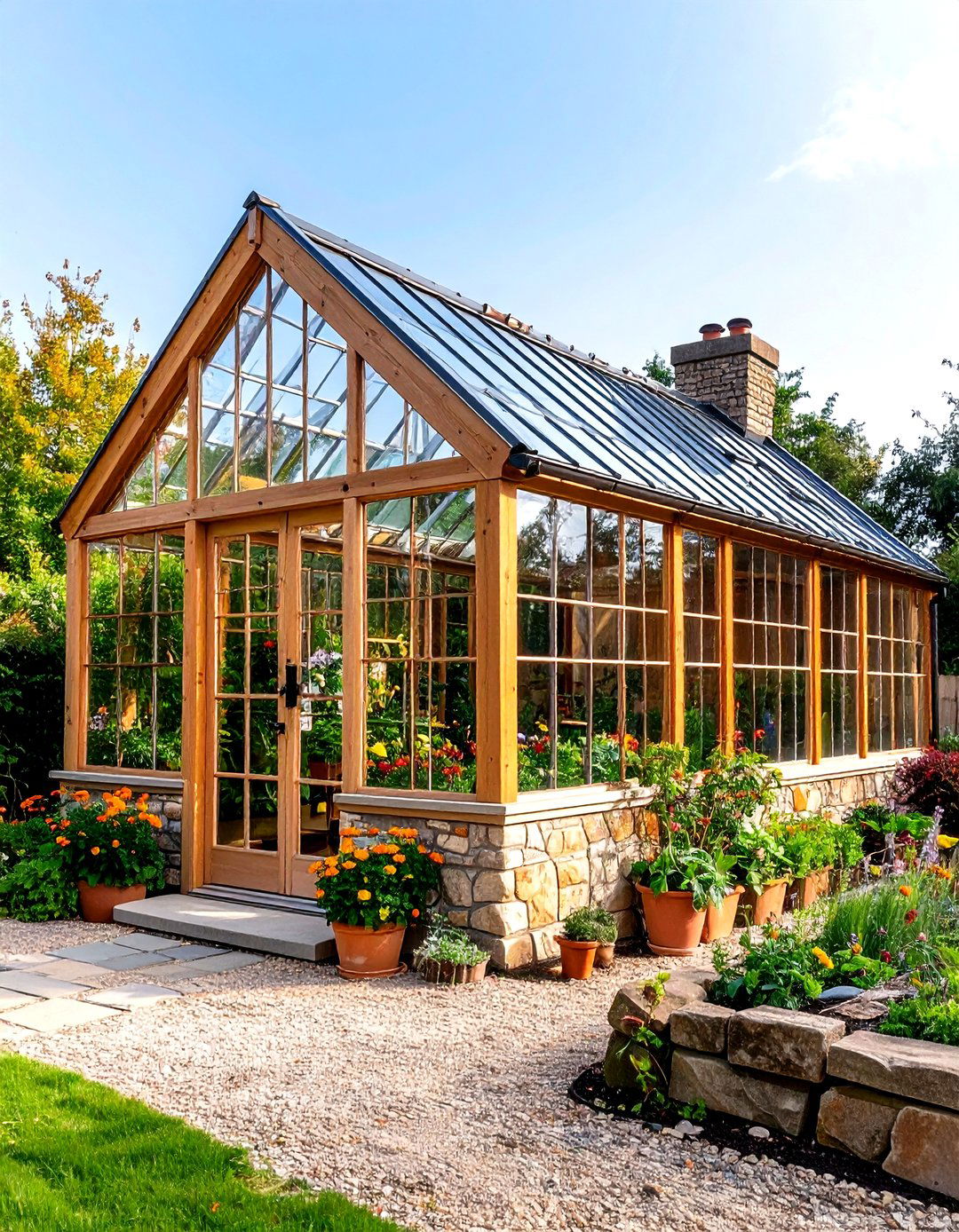
For those craving storybook charm, a mortise-and-tenon timber frame greenhouse flows seamlessly into a cedar-clad storage wing capped with copper ridge vents. Stout oak posts support wide mullioned panes, ensuring panoramic garden views while resisting storm loads. Inside, pegged shelves display terra-cotta pots; outside, a matching pergola invites climbing roses that soften the structure’s lines. Add a stone threshold to regulate interior humidity and route wiring through concealed chases for pendant task lights. Although artisanal joinery raises upfront effort, the heirloom craftsmanship yields a structure that weathers gracefully and can even boost property value—proof that practical gardening spaces needn’t compromise on romance. Horizon Structures Practical Self Reliance
5. Shipping Container Greenhouse Workshop Stack

Stack a 20-foot shipping container workshop beneath a lightweight hoop or A-frame greenhouse to create a vertical powerhouse on small lots. The steel shell offers lockable tool storage and a welding table, while the rooftop greenhouse, built from twin-wall polycarbonate panels, soaks up all-day light. Weld short stair treads to the container’s corner castings for safe access, then add a rainwater plunge gutter feeding both hand-washing and hydroponic reservoirs upstairs. Structural engineers appreciate that ISO containers bear greenhouse loads without extra piers, yet their mass still buffers temperature swings downstairs. Urban makers love that one crane drop transforms an unused driveway into a compact food-and-fabrication hub.
6. Prefab Greenhouse Shed From Amish Builders

When time and carpentry skills are scarce, a factory-built greenhouse shed combo rolls off the truck ready for tomatoes the same afternoon. Prefab models often feature rot-resistant composite floors, screened vents, and dual-side cedar potting benches, with color-matched hardware to appease picky HOAs. Because walls arrive panelized, you can position doors and windows precisely for your sun path and even add a mini front porch for coffee breaks between chores. Many builders offer upgrade kits—solar fans, insulated north walls, or decorative transoms—allowing you to customize without design headaches. The controlled shop environment also means tighter joints and better glazing seals than many weekend DIY attempts. Lapp Structures Horizon Structures
7. Living Roof Greenhouse Shed With Cold Frames

Imagine saffron-hued sedum blanketing the shed’s low-pitch roof while an adjoining greenhouse brims with alpine strawberries. A living roof moderates indoor temperatures by up to 8 °C, extending the shoulder seasons without electric heaters. Below, hinged cold frames lean against the greenhouse wall, borrowing residual warmth to harden off trays. Capture runoff through hidden scuppers that drip irrigate the roof garden, completing a closed-loop hydration cycle. This ecological stacked design pairs pollinator habitat overhead with produce inside and storage under one envelope, showcasing how even modest backyards can model the regenerative ethos of larger eco-builds. The Guardian
8. Compact Balcony Greenhouse Shed Pod
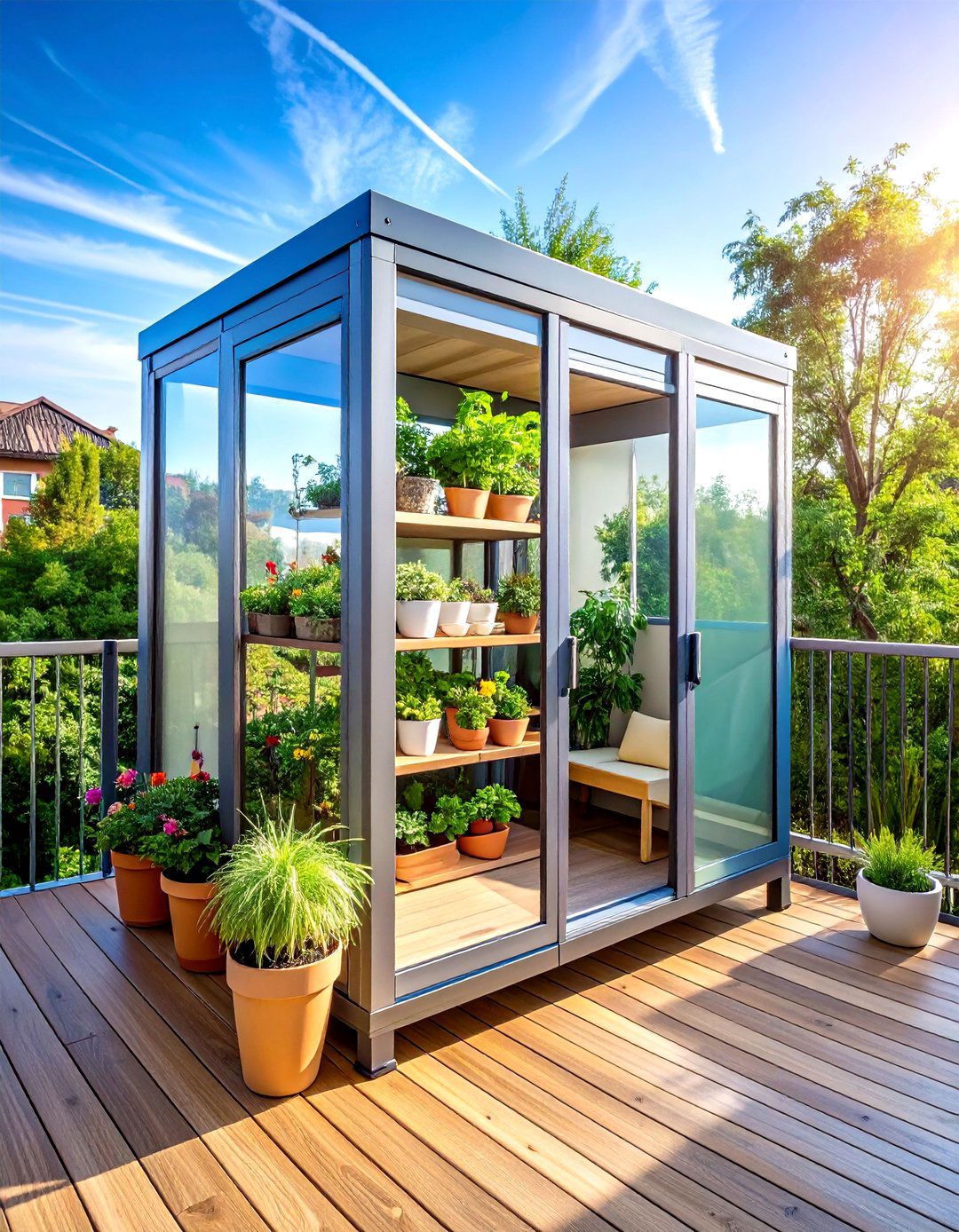
For apartment dwellers, a modular steel-tube pod combines a narrow shelving greenhouse on one side with a lockable cabinet for soil bags and gloves on the other—all weighing under 90 kg so it sits legally on reinforced balconies. Clear acrylic doors swing outward to maximize interior width, while reflective Mylar backs double available light for seedlings. Magnetic insect screens keep neighbors’ pests at bay. Best of all, the unit ships flat-pack and assembles with an Allen key, letting renters reclaim every square meter of their outdoor perch without drilling a single hole into the building façade. Better Homes & Gardens
9. Gable-End Greenhouse Shed With Rear Storage

A steep-pitched gable greenhouse offers cathedral-like height for citrus trees, yet integrates a discreet rear shed reached through a sliding barn door. By placing opaque siding only on the north-facing wedge, you create a shadow-free growing zone while hiding lumber offcuts and compost tumblers. The tall ridge encourages stack-effect ventilation; add an automatic opener to the uppermost vent for low-maintenance climate control. Decorative corbels and Victorian cresting dress up the exterior, proving that utilitarian storage and horticultural beauty can coexist elegantly—even in the same footprint. Pinterest
10. Scandinavian All-Season Glasshouse Shed
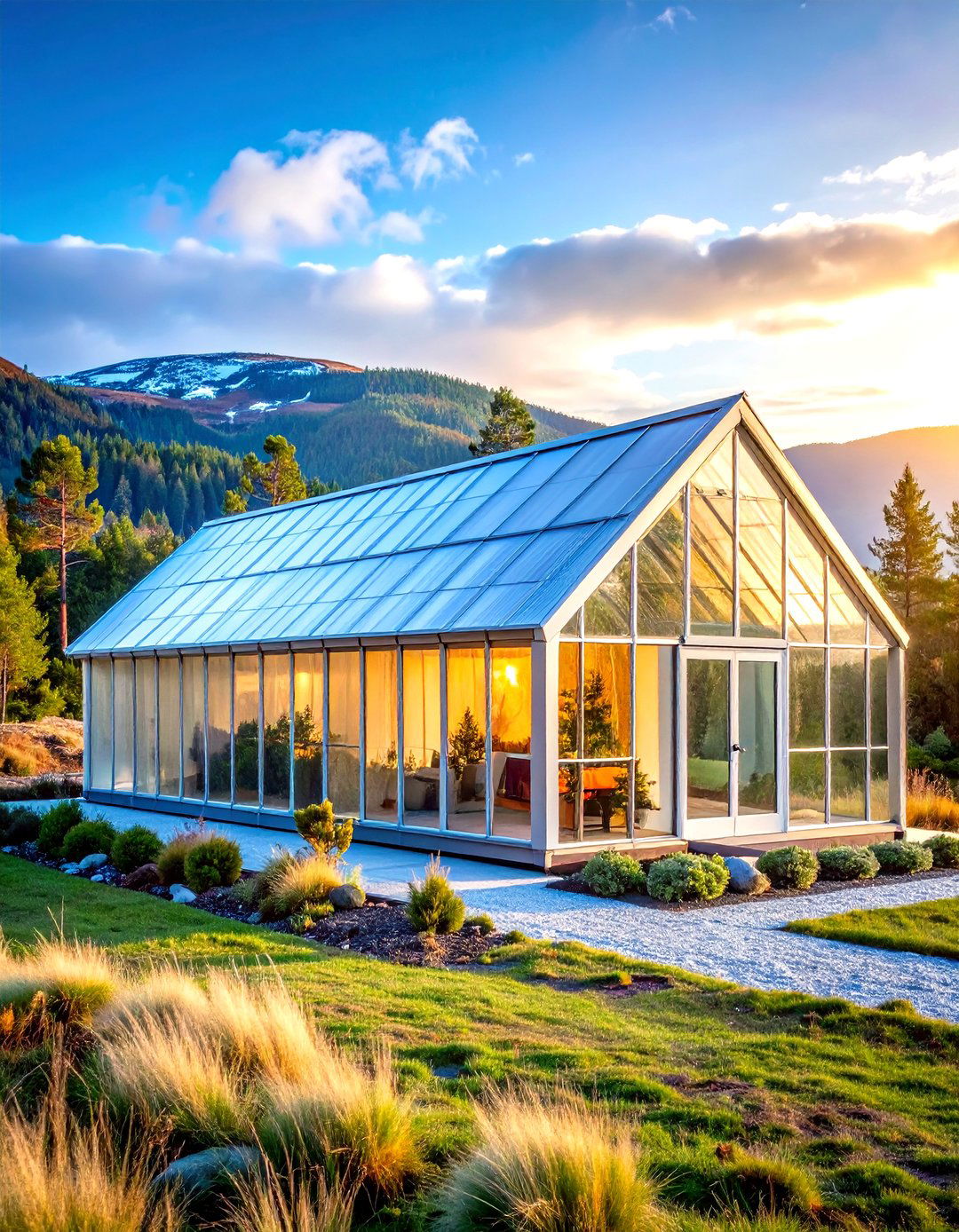
Minimalist pine cladding, triple-glazed panels, and a frost-white color palette give this greenhouse-shed combo its sleek Nordic identity. Thick mineral-wool insulation wraps the storage bay, while the greenhouse leverages low-angle winter sunlight to pre-warm that zone, reducing reliance on electric heaters. A buried glycol loop shuttles surplus daytime heat into a sand bed beneath the shed floor, releasing warmth overnight. The aesthetic may whisper hygge, yet the engineering is unapologetically high-performance, supporting harvests of figs and olives even at northern latitudes where winters routinely plunge below –15 °C. The Guardian
11. Off-Grid Solar-Powered Greenhouse Shed
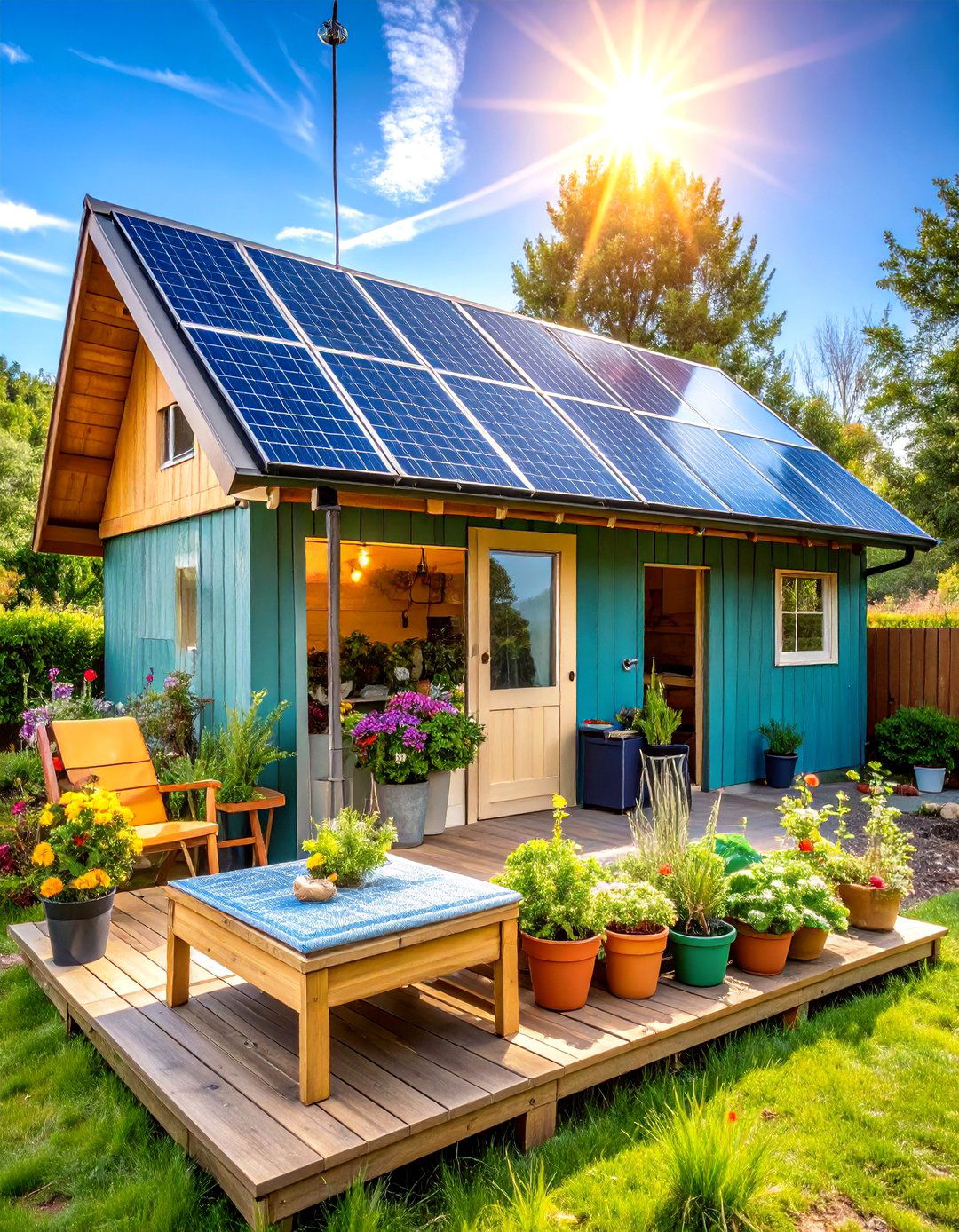
Pair a south-tilted solar array on the shed roof with a compact lithium battery bank inside, and your greenhouse fans, lights, and irrigation pumps hum day and night without grid ties. Use reflective bubble wrap on the shed’s interior north wall to bounce lumen-rich light back into beds, and store delicate electronics in a gasket-sealed compartment to shield them from humidity. Add a compost-heat bench along one greenhouse flank; the microbial warmth augments solar gain and yields finished soil for next season’s beds. This synergy turns remote plots into self-sufficient sanctuaries that churn out produce long after first frost hits neighboring gardens.
12. Rustic Stone-Base Greenhouse Shed Hybrid
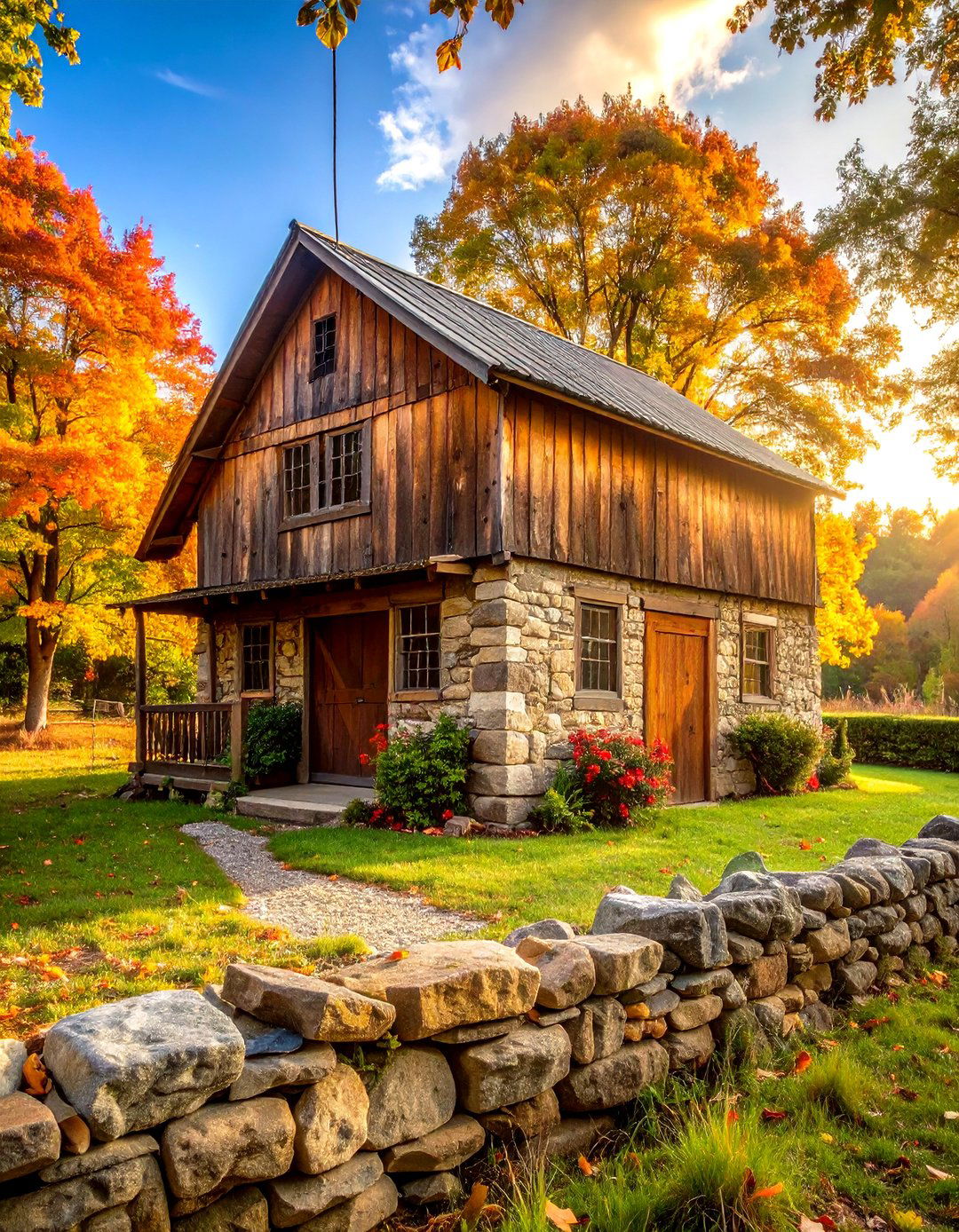
A knee-high mortared-stone stem wall anchors the structure against mountain gusts and adds thermal mass, while rough-sawn boards above transition gradually into clear glazing, marrying rustic charm with modern performance. Inside, the stone captures radiant warmth, protecting both seedlings and stored hand tools from overnight chills. An iron pulley hoist salvaged from a dairy barn lifts mulch bags straight from truck bed to mezzanine loft—proof a heritage aesthetic needn’t sacrifice ergonomic convenience. This style harmonizes with older farmsteads yet still delivers the bright, year-round growing environment of a contemporary glasshouse. Pinterest
13. Modular Panel Greenhouse Shed That Grows
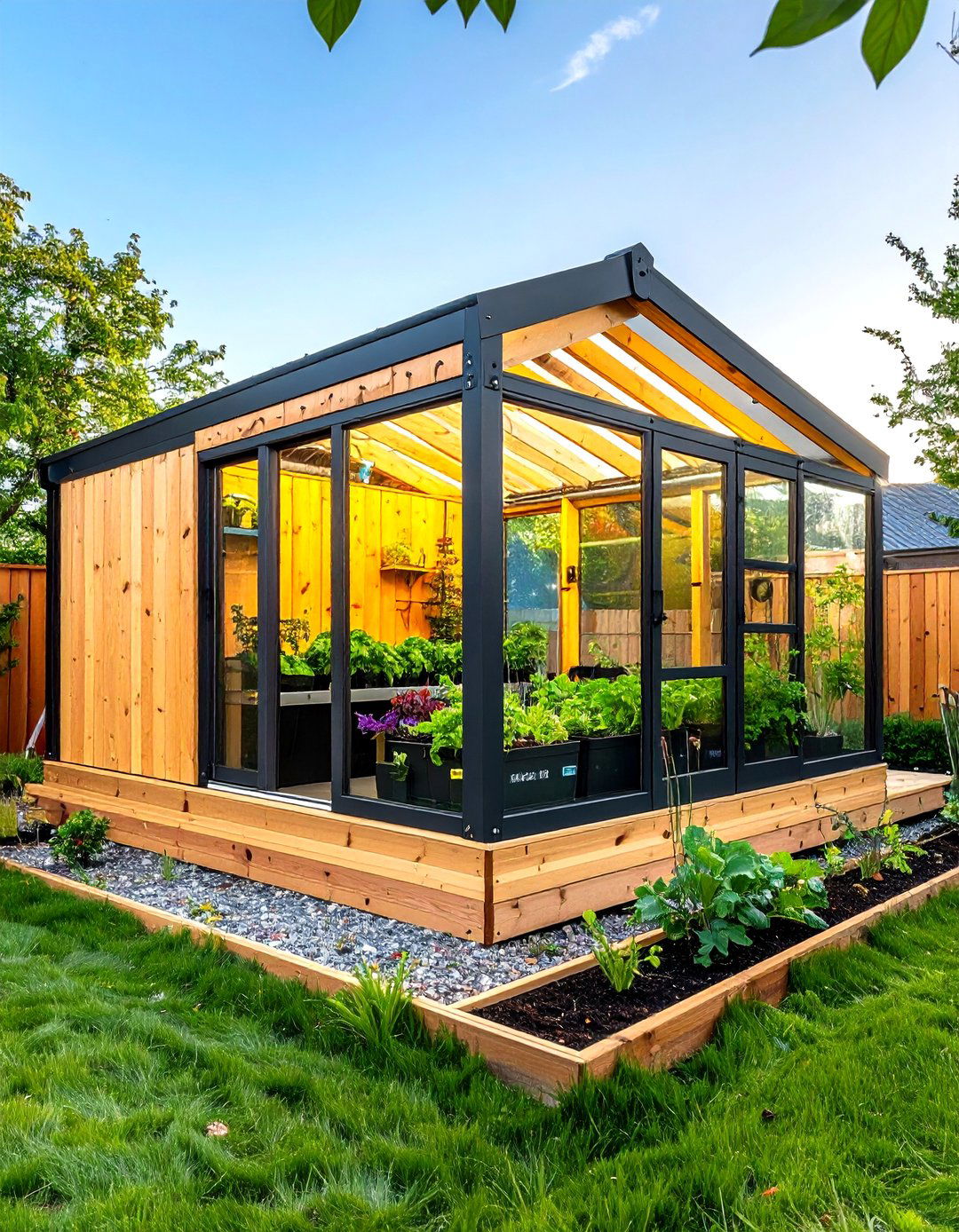
Start with one 8×10-foot core module: half opaque shed, half greenhouse. Pre-drilled aluminum rails let you bolt on future segments as your garden expands—perhaps another glazed bay for orchids or a deeper storage nook for a ride-on mower. Flexible EPDM roof joints and plug-and-play wiring harnesses make add-ons watertight in an afternoon. This incremental approach spreads costs over seasons and adapts to evolving hobby levels, avoiding the “too small too soon” regret common with single-size kits. It also packs flat for shipping worldwide, trimming embodied carbon compared with bespoke builds. Etsy
14. Vertical Wall Greenhouse Added To Shed
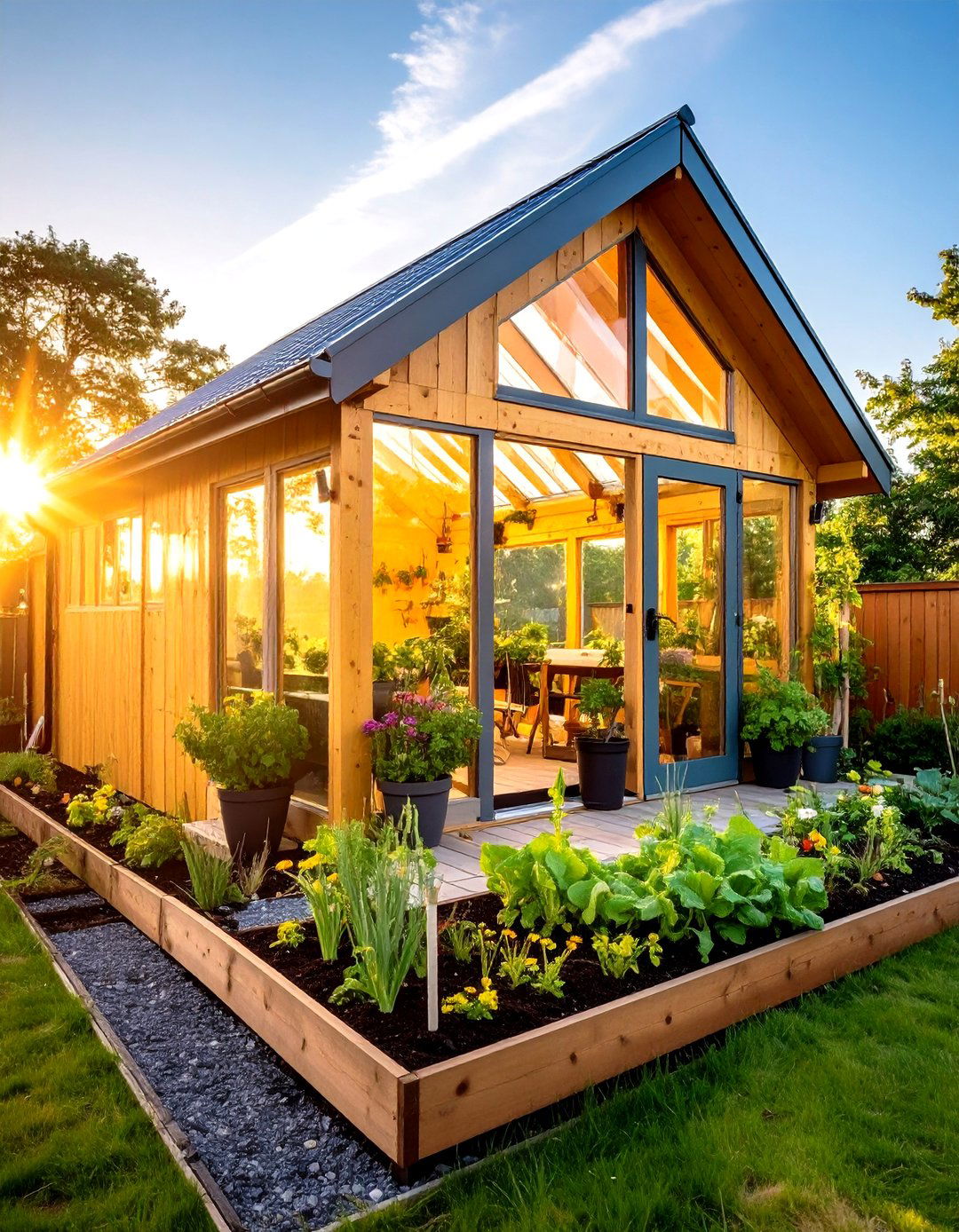
Transform the sun-soaked south wall of an existing shed into a productive “green wall” by installing polycarbonate pockets that cradle leafy greens while insulating the structure. A small lean-to roof shields the planting channels, and a gutter atop funnels condensate into drip emitters embedded in each pocket. Behind the assemblies, double-bubble insulation keeps storage interiors cool, proving vertical farms aren’t confined to urban skyscrapers. Swap crops seasonally—lettuce in spring, strawberries in summer, and dwarf kale in autumn—taking advantage of easy reach without occupying extra garden ground. The Spruce
15. Insulated Polycarbonate Greenhouse Shed Tunnel
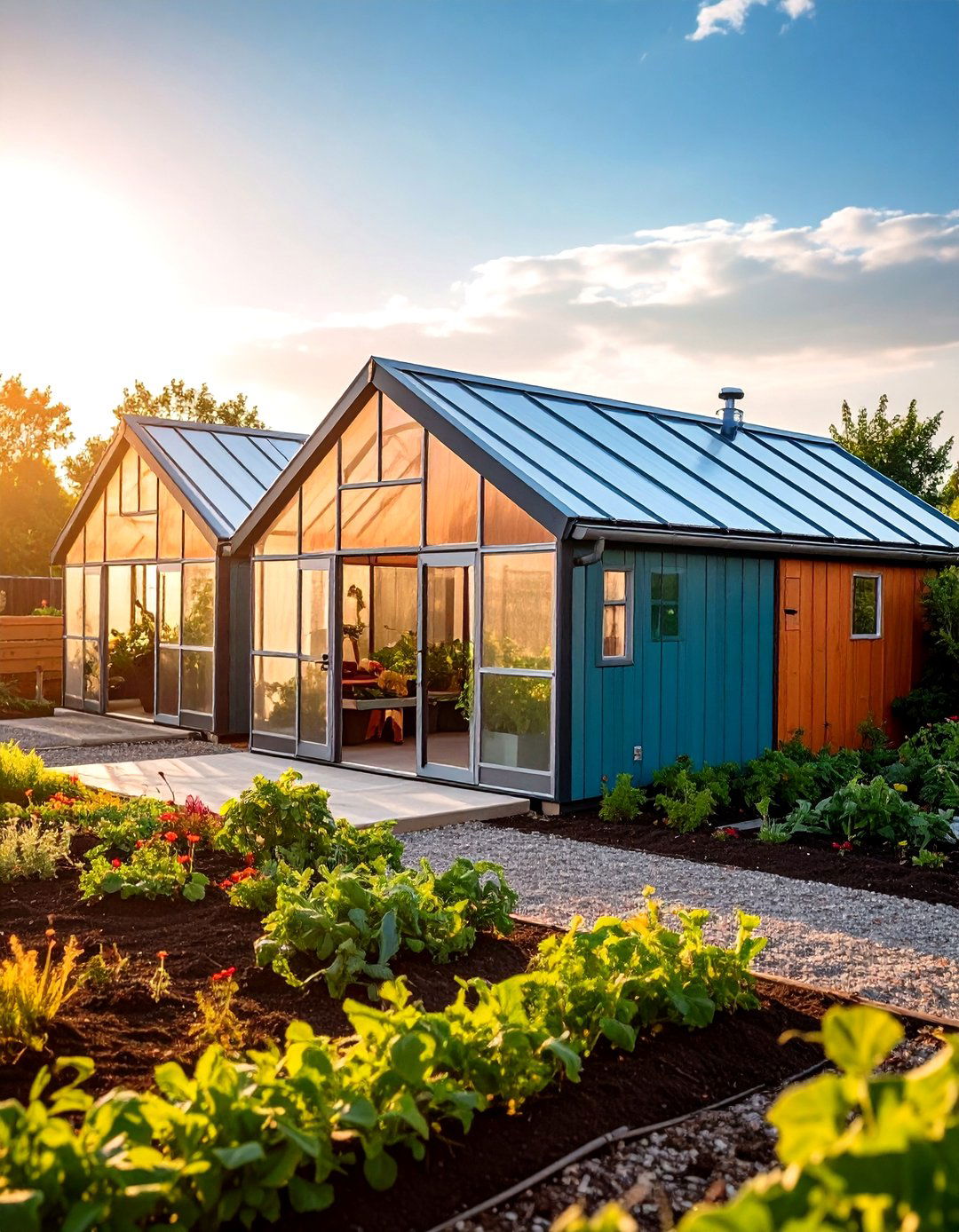
Twin-wall polycarbonate spans a gently curved hoop that links two standalone sheds—one for tools, the other for bicycles—creating a bright tunnel greenhouse in between. Because each shed buffers wind, the central corridor stays significantly warmer, acting like a covered walkway and propagation corridor simultaneously. Overhead gutter pipes double as rail tracks for hanging baskets, while removable end panels offer drive-through access for wheelbarrows. In heavy-snow regions, the arched shell sheds drifts effortlessly, sparing you mid-storm roof sweeps and giving spinach a snug microclimate even when snowbanks tower outside. Rural Sprout
16. Tropical Microclimate Greenhouse To Potting Shed

Enclosing a small section of lawn with glass and linking it directly to your potting shed door creates a pocket of balmy humidity perfect for citrus, bananas, or ginger. A pebble-filled French drain under the greenhouse floor feeds excess condensate to thirsty shrubs bordering the shed, while an interior misting line keeps foliage glossy. Even in snowy climates, you’ll step from chilly yard into lush warmth, reinforcing both psychological and culinary resilience by broadening your crop palette. Overwintering tender ornamentals here also frees valuable home-interior space otherwise cluttered with pots. The Guardian
17. Nursery Propagation Greenhouse Shed Combo
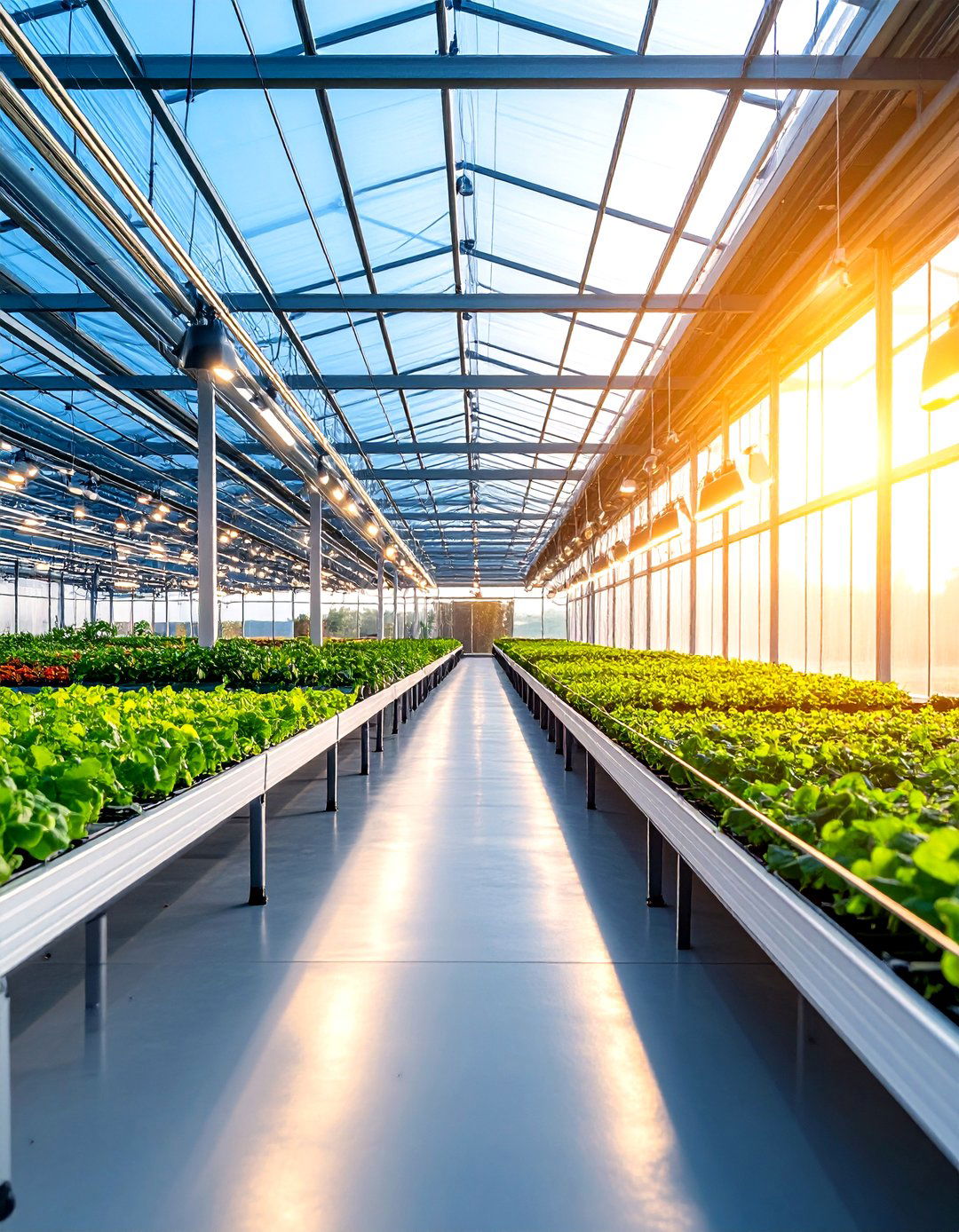
Attach a narrow, high-humidity propagation wing—outfitted with intermittent mist nozzles and bottom-heat mats—to one side of a conventional storage shed, and you gain commercial-grade seedling throughput without leaving the backyard. Keep mains water and electrical systems consolidated in the shed’s utility closet for freeze protection, then route insulated service chases into the propagation zone. Polyethylene curtain walls allow you to partition humidity zones so cuttings stay moist while the tool corridor remains dry. Homesteaders selling bedding plants at farmers’ markets praise this micro-nursery for converting a hobby into a tidy side hustle. Better Homes & Gardens
18. Root Cellar Below, Greenhouse Shed Above
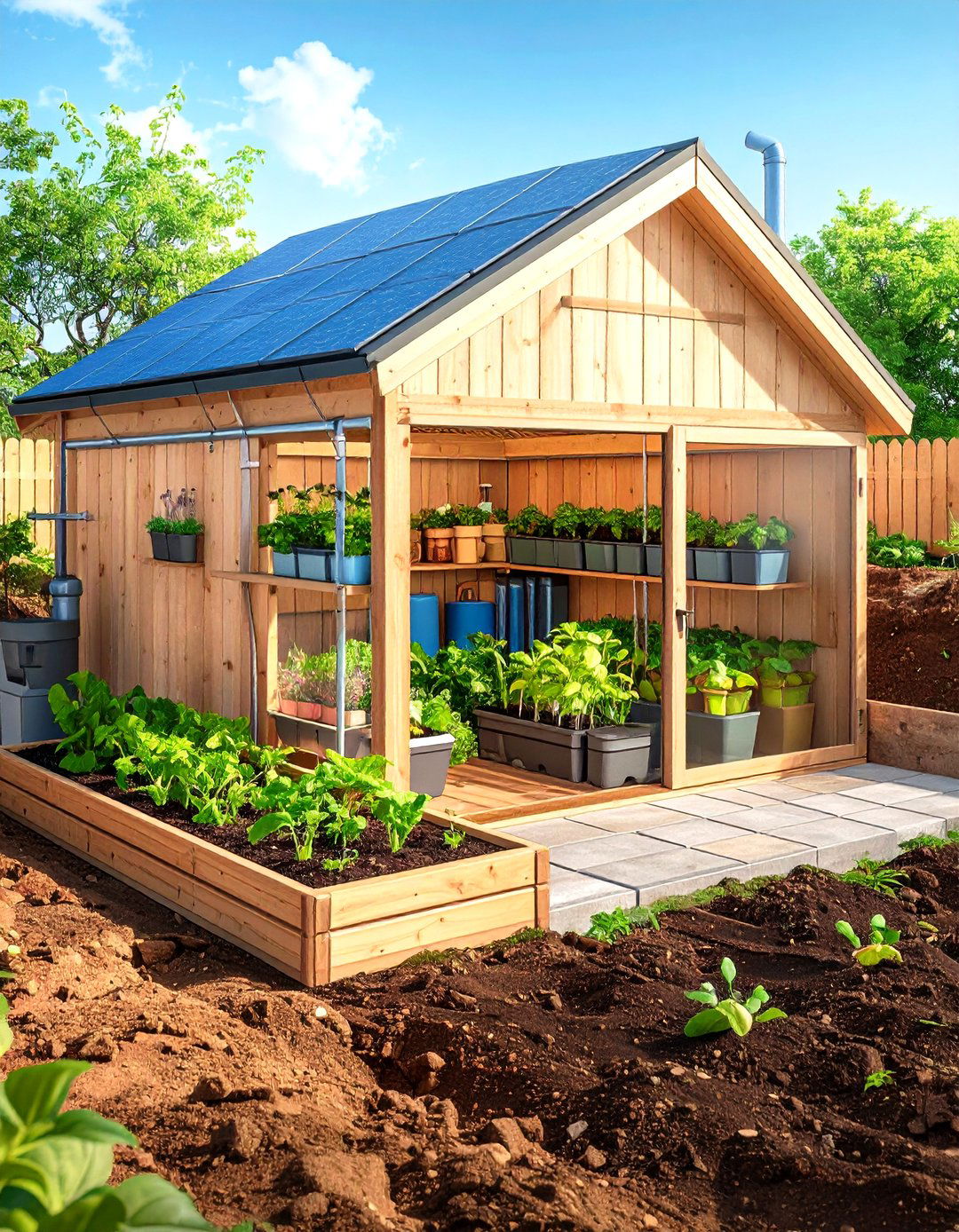
Excavate a half-basement under the shed portion to create a naturally cool root cellar, then let the greenhouse above warm the floor slab slightly, stabilizing temperatures between 2 °C and 6 °C—ideal for carrots and apples. The thick earth walls reduce structural heating demand, while a passive air-exchange tube channels ethylene-rich cellar air upward to fertilize greenhouse crops. Integrating storage and fresh-produce preservation in one stack slashes harvest-handling time and compresses infrastructure into a single permit footprint, handy in zoning-restricted districts. Backwoods Home Magazine
19. Studio Retreat With Attached Greenhouse Shed
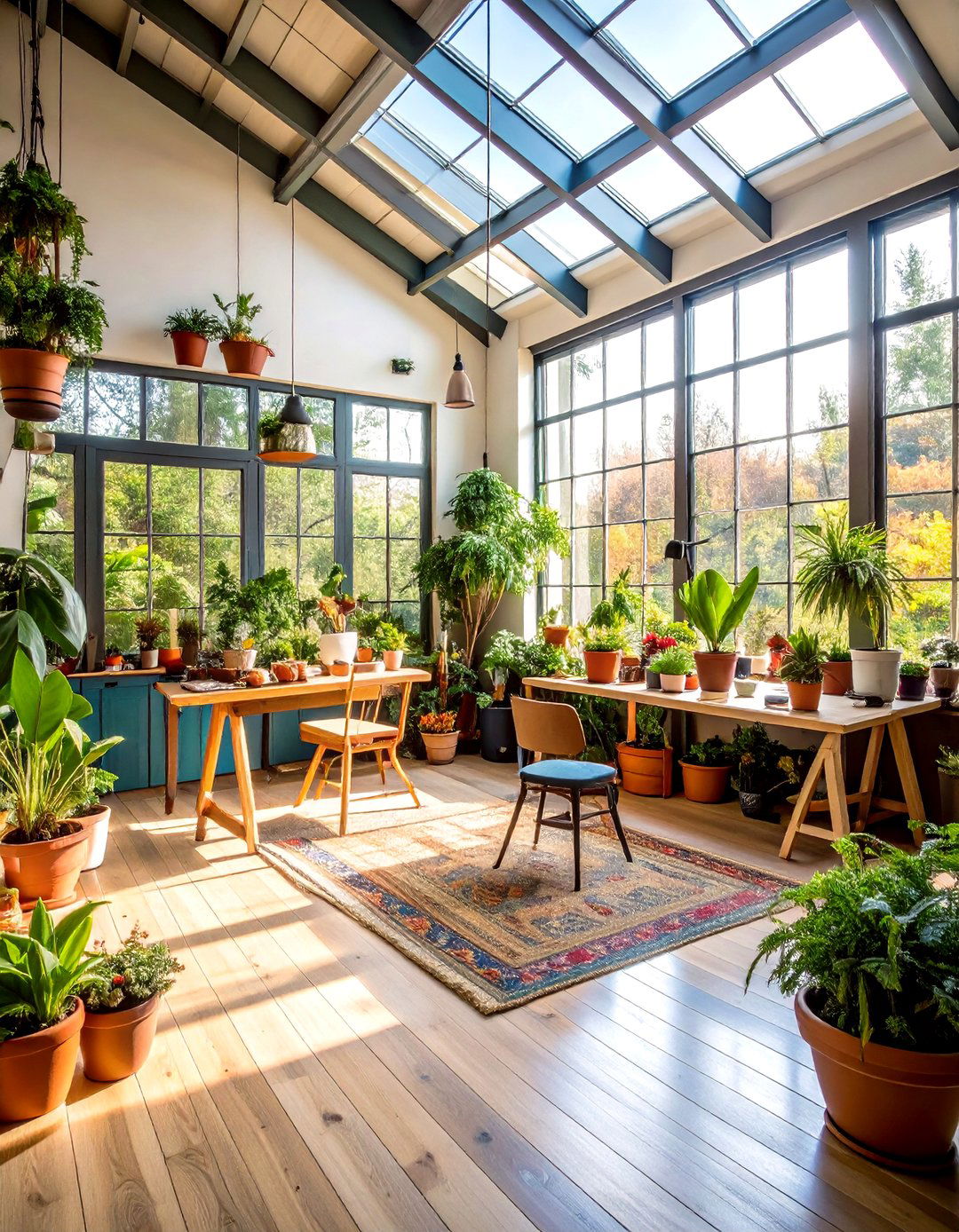
Artists and remote workers thrive in a light-soaked studio that adjoins a discrete shed for canvases and a greenhouse that doubles as a plant-filled lounge. Operable clerestory windows vent paint fumes into the greenhouse where plants metabolize trace VOCs, improving indoor air quality. Position skylights to bounce natural light onto your workstation while still directing full-spectrum rays onto tomatoes nearby—biophilic design and productivity in one stroke. The visual continuity between workspace and greenery keeps creative energy high, turning everyday chores like watering into restorative breaks from the screen. The Guardian
20. Aquaponics System Inside Greenhouse Shed

A purpose-built equipment shed housing fish-tank filters, pumps, and feed simplifies the complexity of aquaponics while the adjacent greenhouse hosts leafy beds irrigated by nutrient-rich water. Insulate the shed’s fish-room walls to mute pump noise and stabilize temperature, then run color-coded PEX lines through the shared wall for hassle-free maintenance. Place tanks on the shed’s shaded north side to avoid algal blooms, leaving the greenhouse’s sunny south expanse free for vegetables. This partitioned layout minimizes condensation around electronics and offers a clean workspace for water testing, making closed-loop food production attainable even for weekend gardeners.
Conclusion:
Blending a greenhouse with a shed turns ordinary backyard footprints into adaptable engines of growth, storage, and creativity. From lean-to sun traps that trim heating bills to aquaponic hubs that raise fish and greens in tandem, each concept leverages the protective strength of a shed with the nurturing climate of a greenhouse. Choose materials, orientation, and energy strategies that match your climate and ambitions, and you’ll harvest not just crops but year-round comfort and efficiency—proof that thoughtful design lets plants and projects thrive side by side. Practical Self Reliance



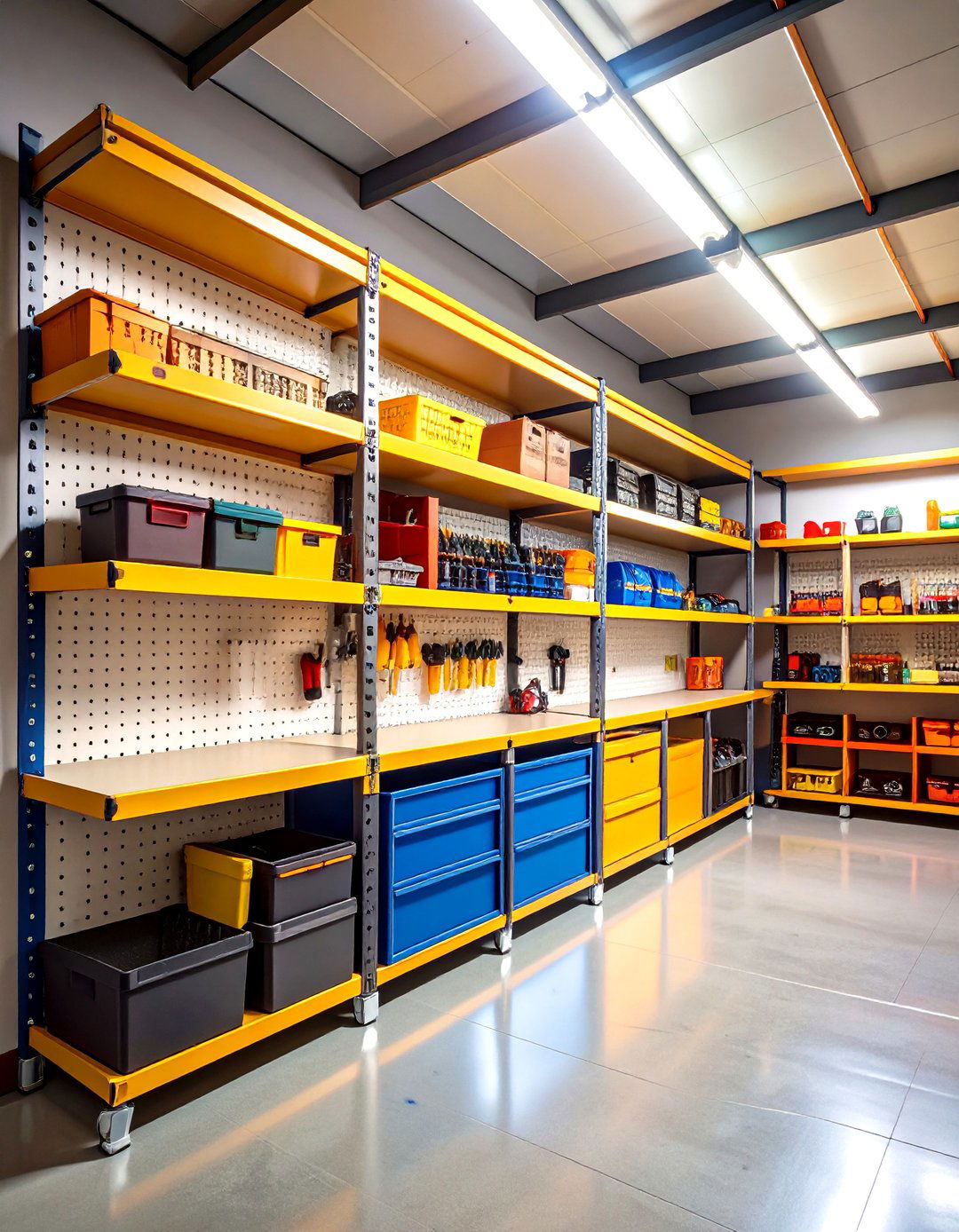
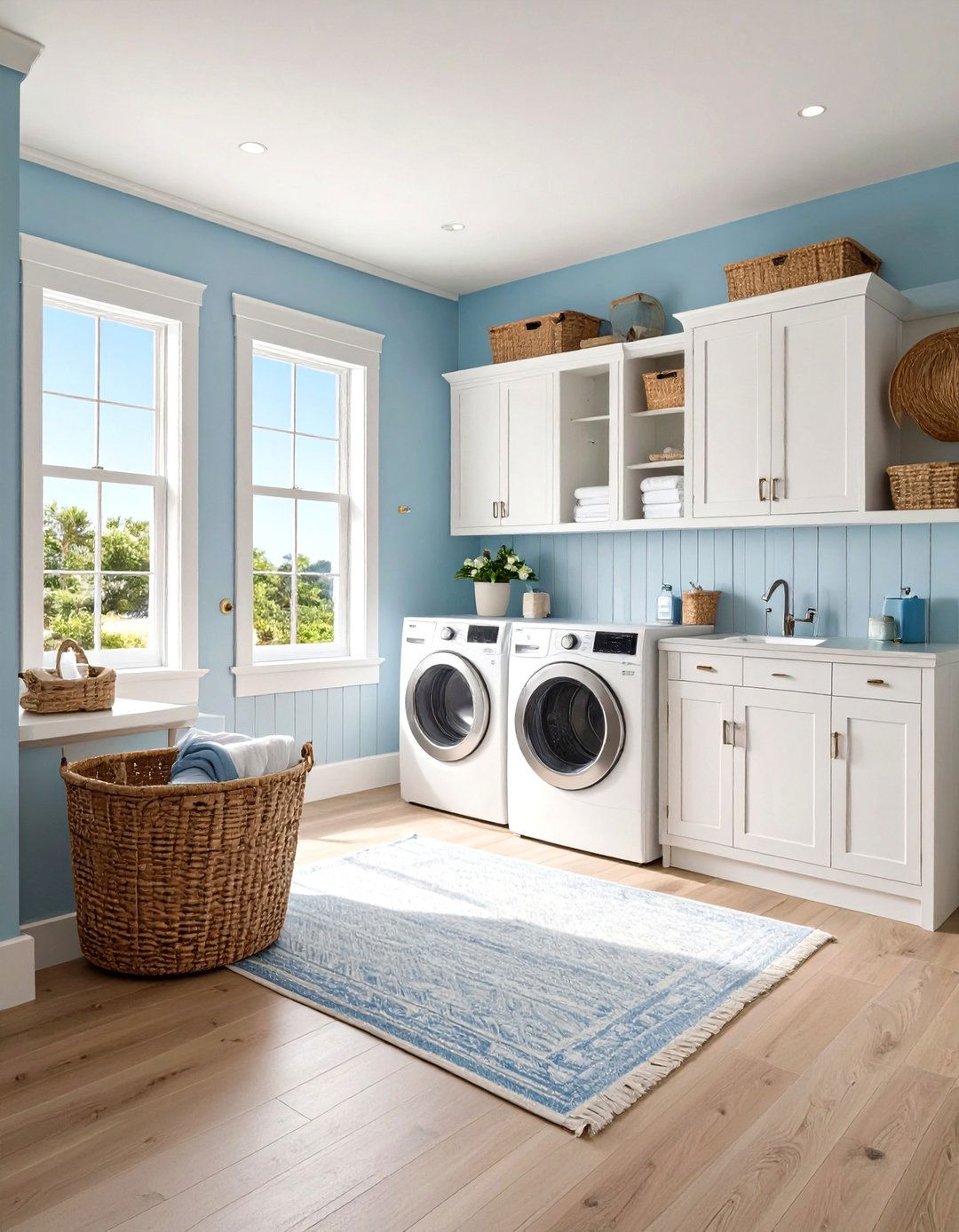
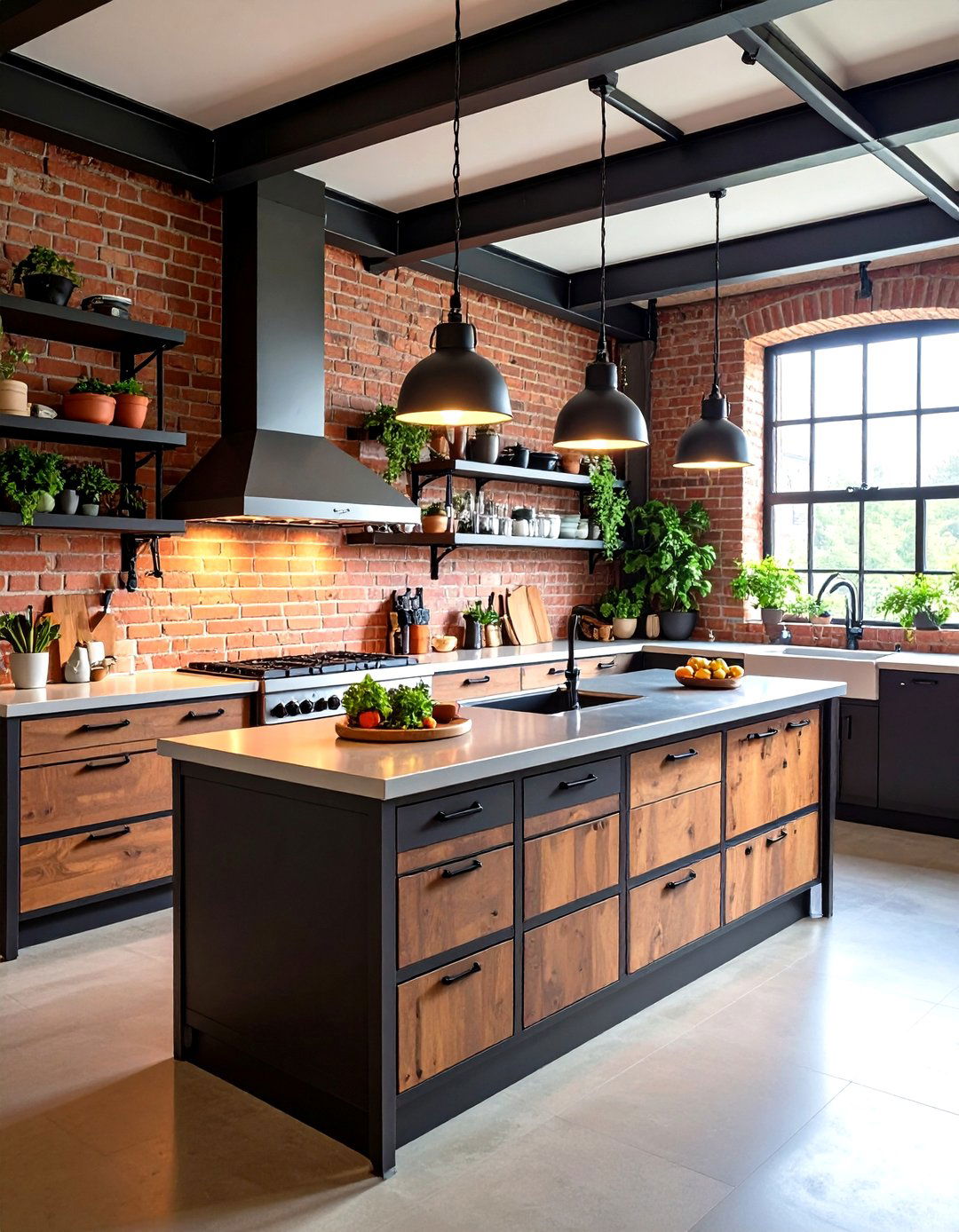
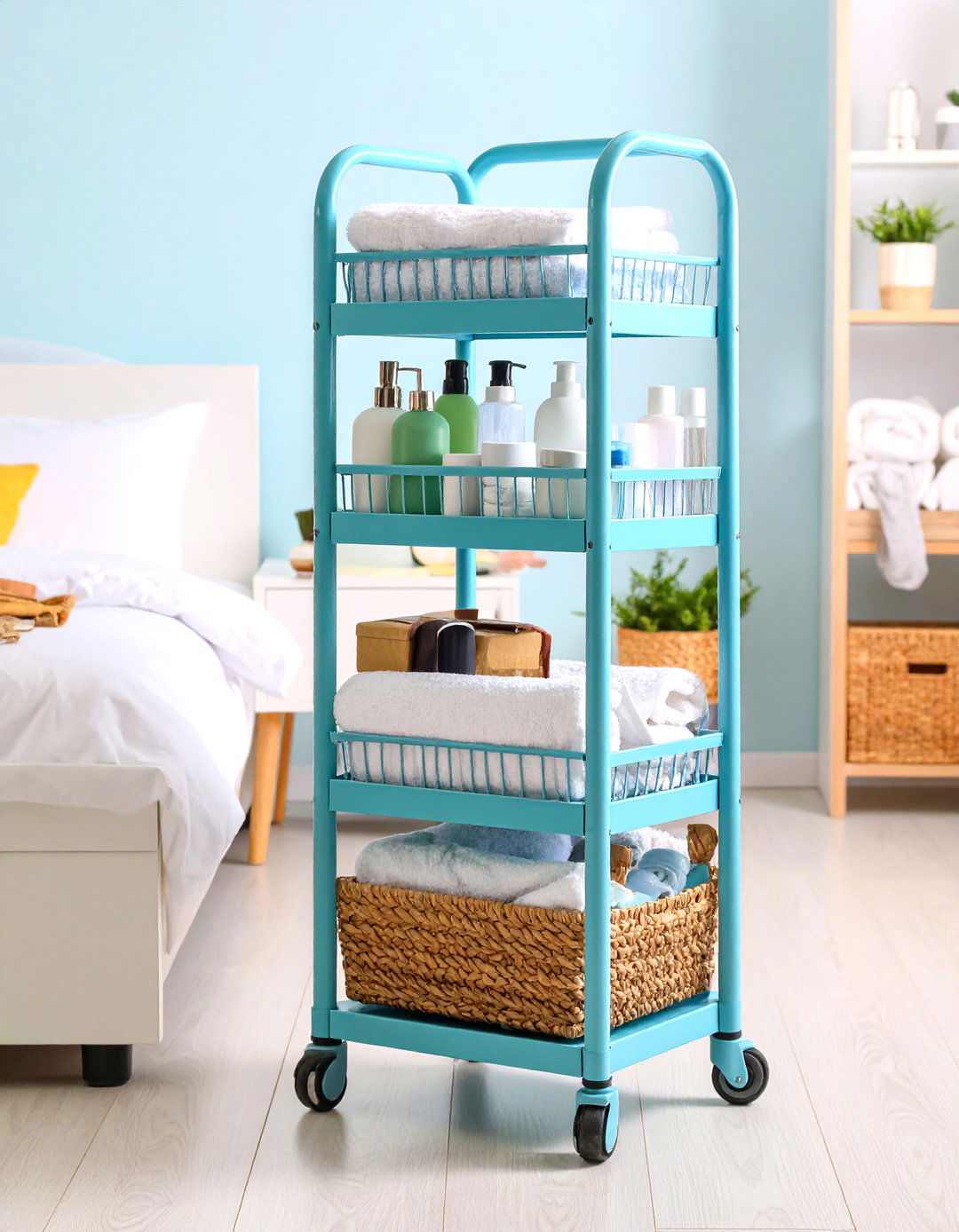
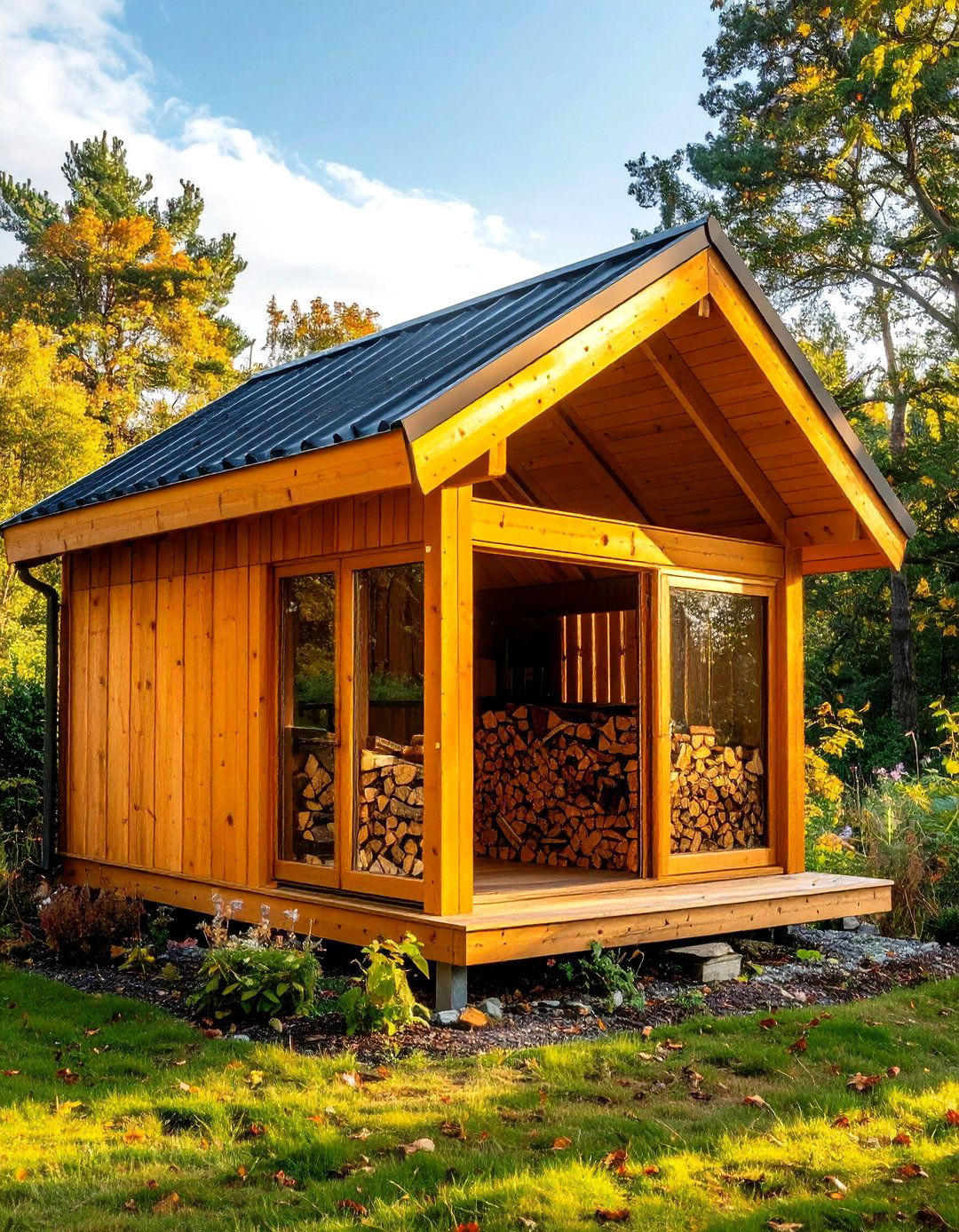
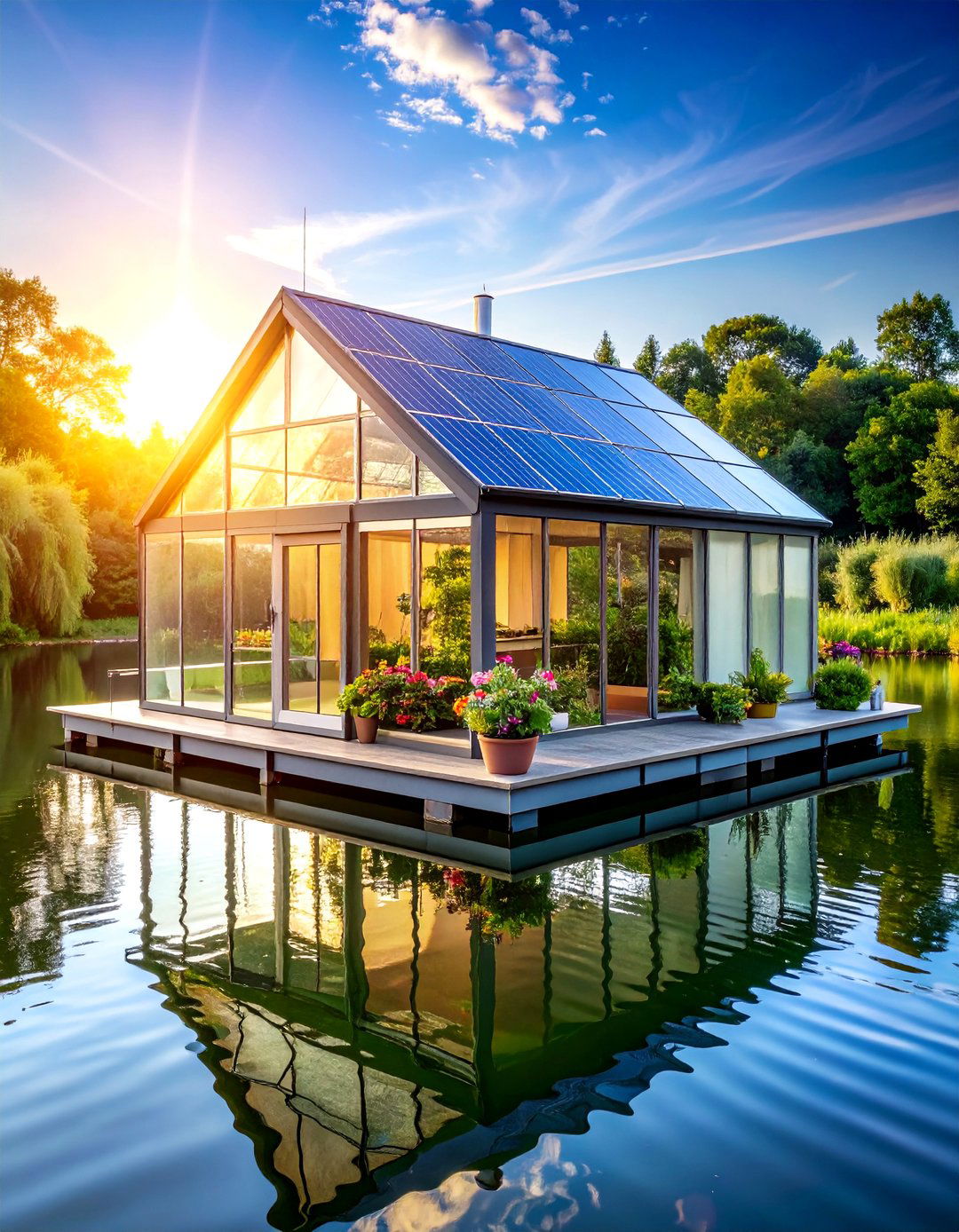
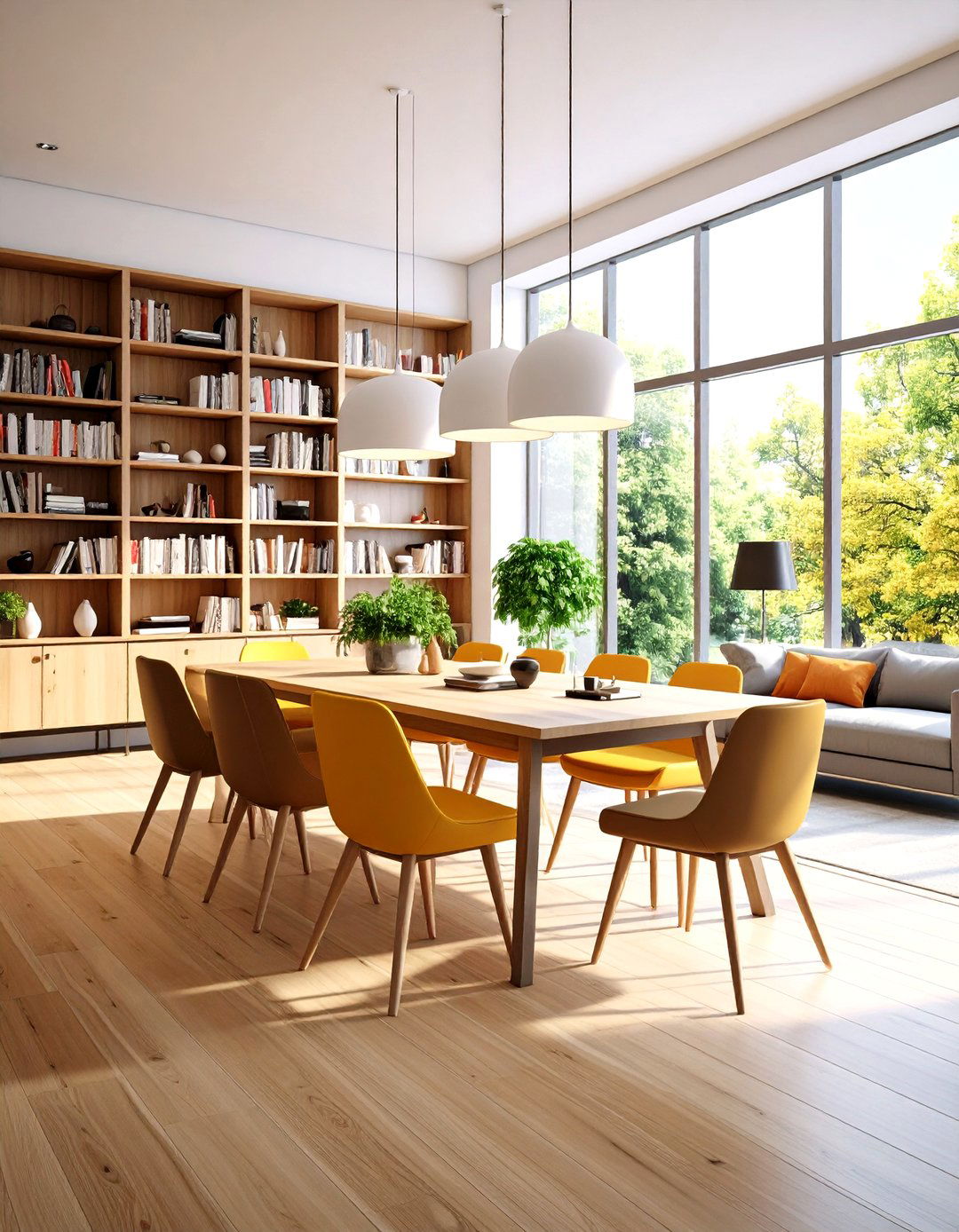
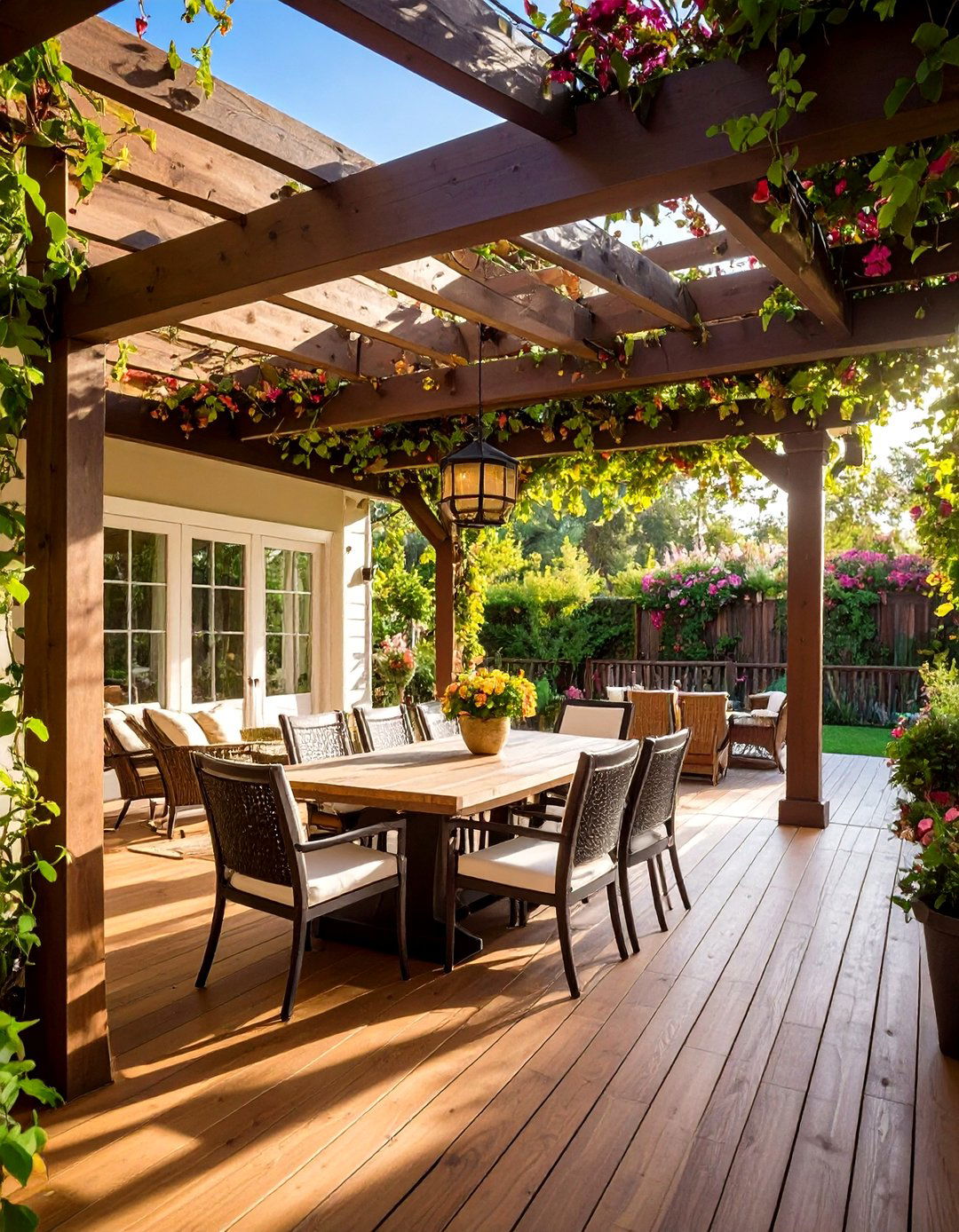
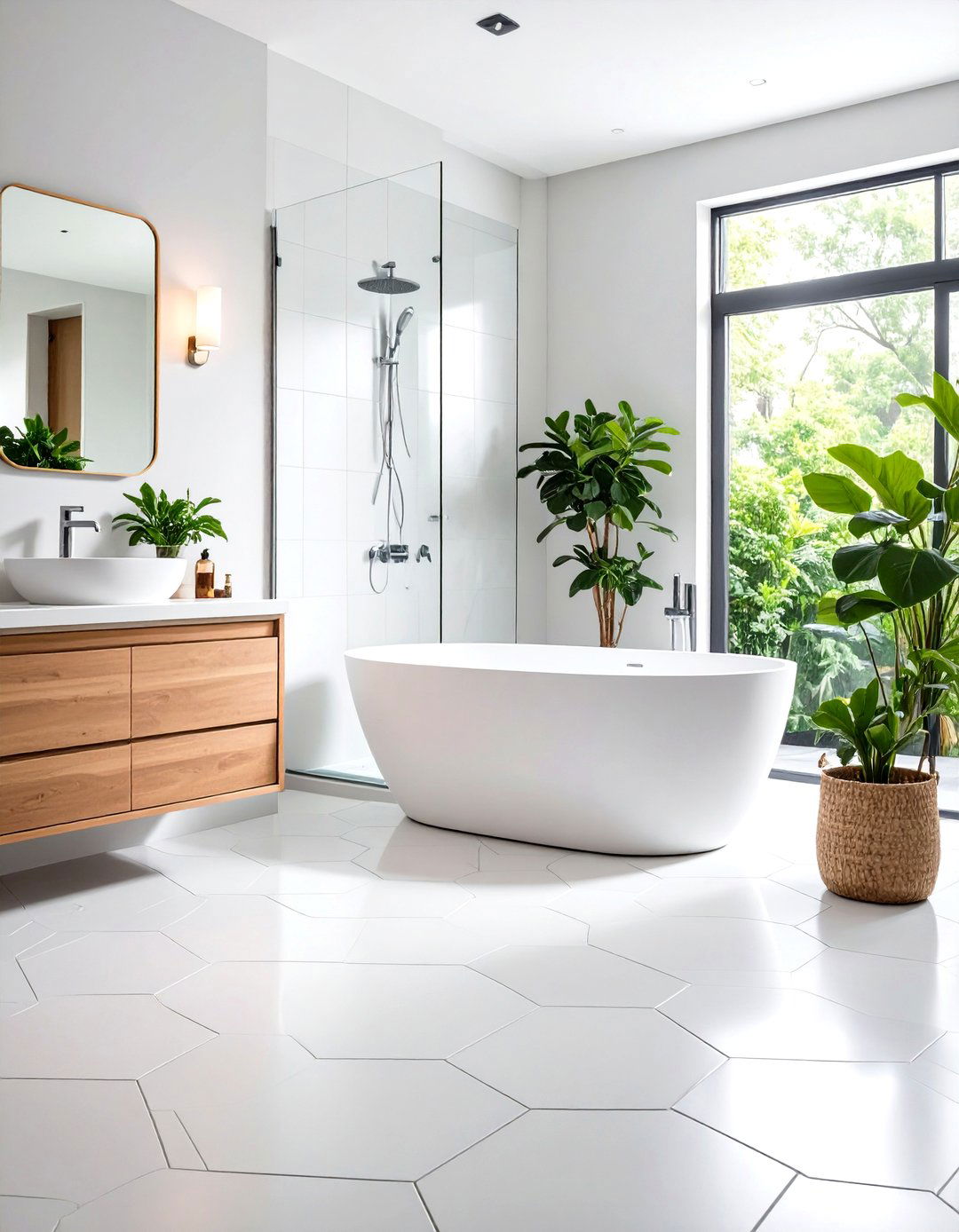
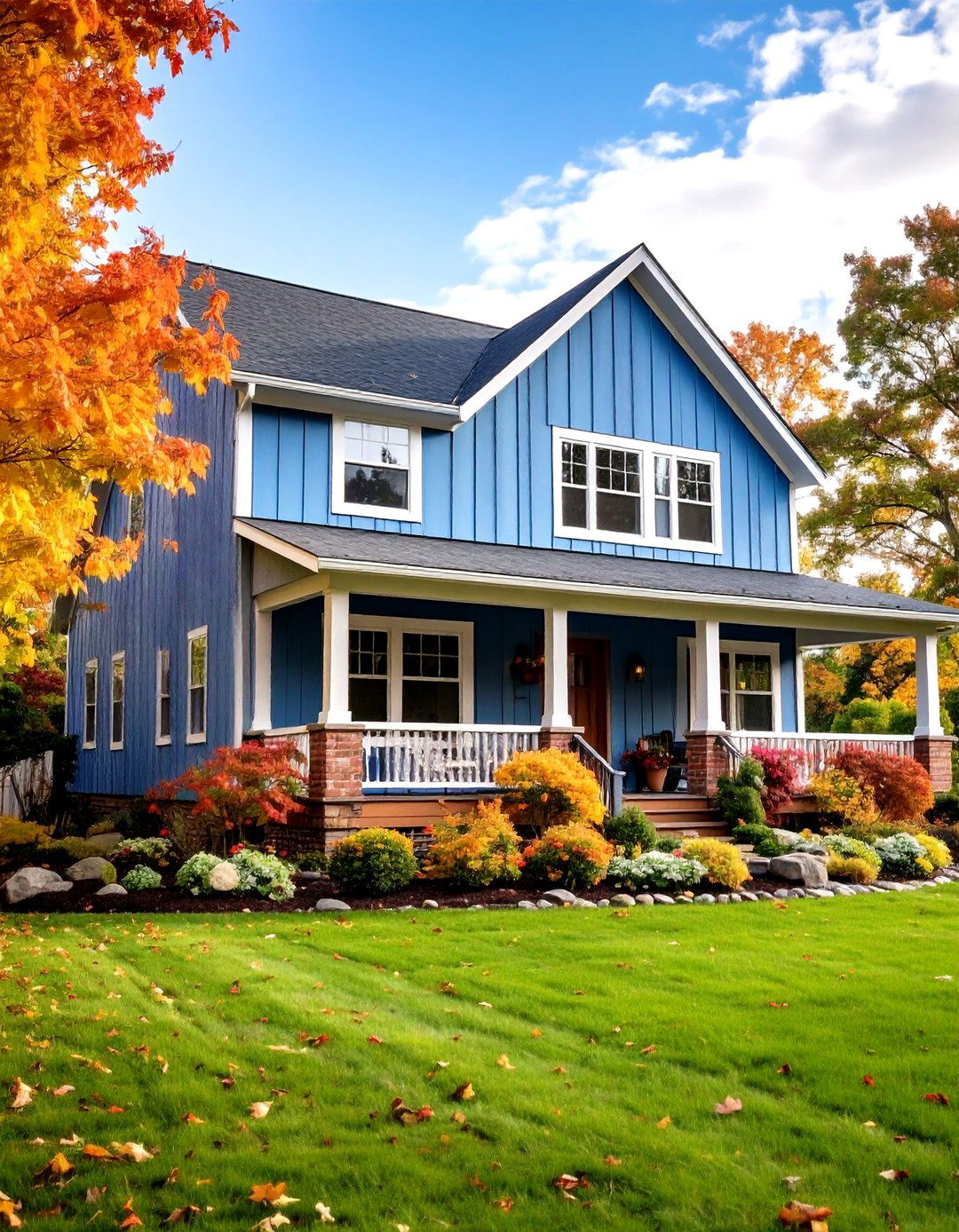
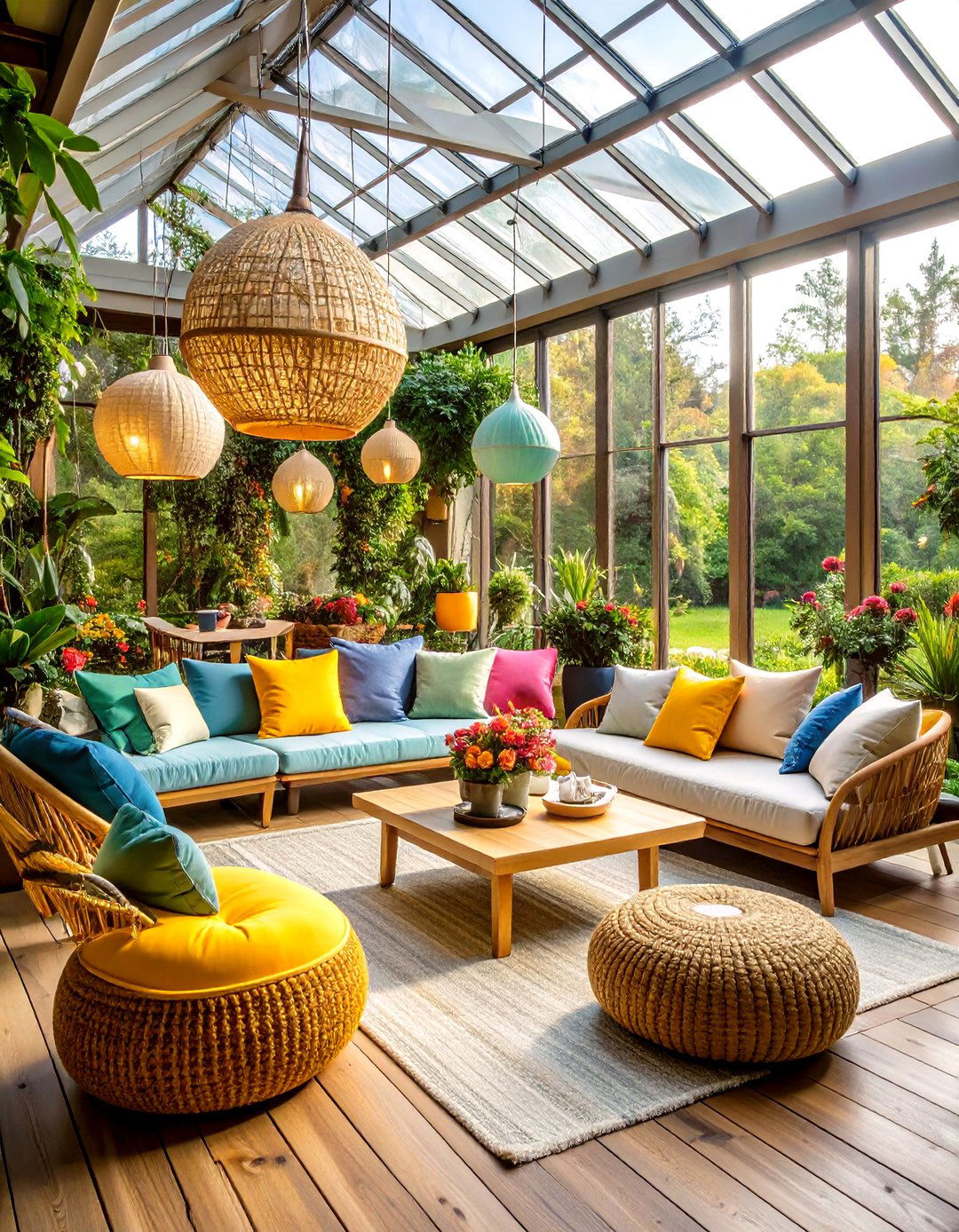


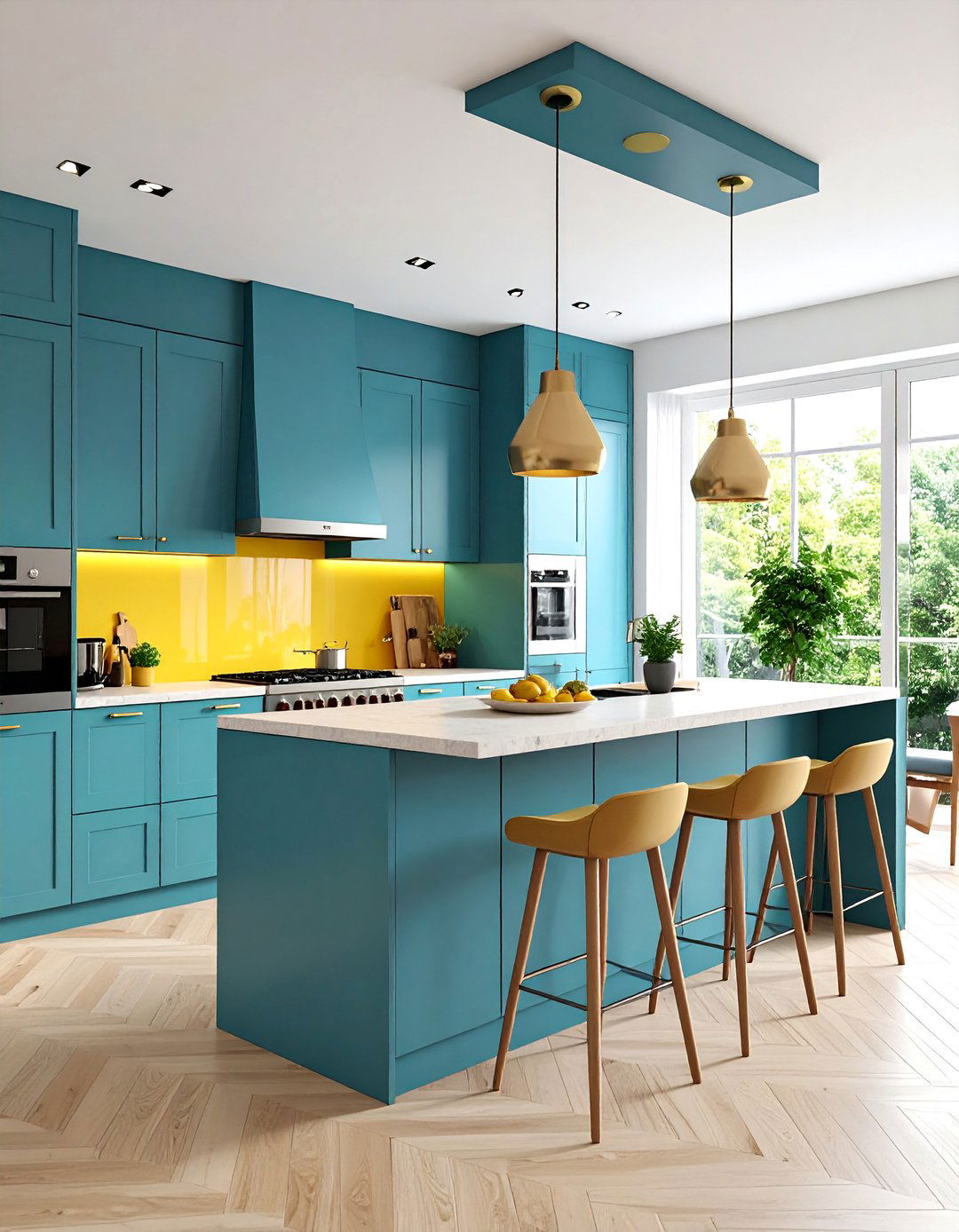
Leave a Reply